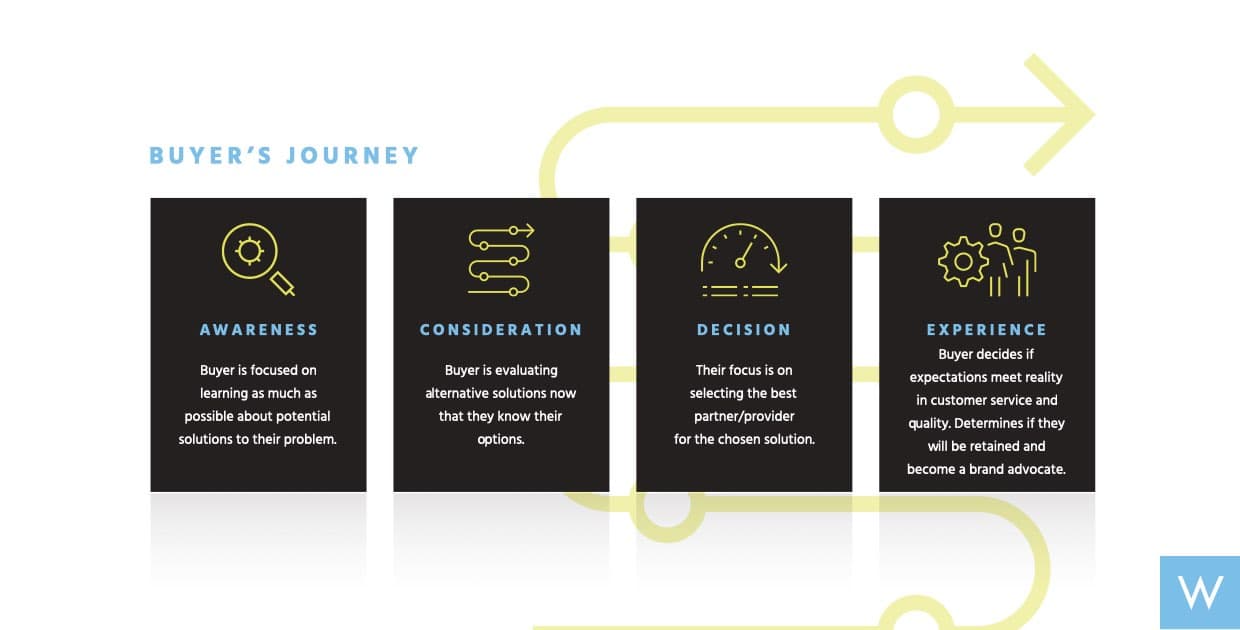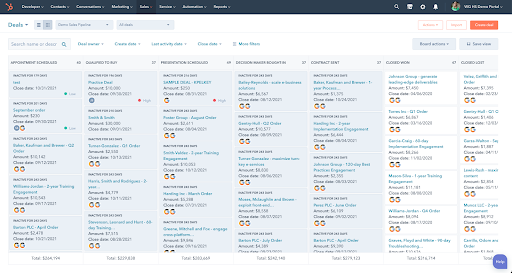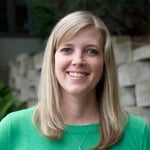Sales and Marketing Glossary: 10 Most Important Terms to Agree On for Alignment
Written by
“They just weren’t on the same page.” How often have you heard that when learning about professional breakups? Maybe about a head coach’s dismissal from a football team, or the “creative differences” that plagued a movie production and led to a change in directors. Whatever the case may be, if everyone in a company or even a single project isn’t aligned, things will fall apart — fast.
The same holds true in marketing and sales. Sales and marketing alignment is critical to successfully meeting your business goals. The marketing team is primarily responsible for bringing in qualified prospects, while the sales team is tasked with sealing the deal.
In the inbound flywheel framework (Attract, Engage, Delight), we see how connected the marketing, sales, and customer service teams are. If there’s friction in your flywheel because the teams aren’t speaking the same language, it can cause lack of transparency and trust between the departments and, worse, a disconnected prospect experience.
The two teams must work in tandem to keep business rolling in, so they’ll need to be reading from the same marketing and sales glossary throughout the process. Here are 10 important terms to agree on for alignment.
Service Level Agreement
Everything you see that follows must be clearly defined in the Service Level Agreement (SLA). It’s the written agreement that guides the collaboration of the sales and marketing teams, with explicit explanations of goals, terms, protocols, and expectations. Having this in writing is key — it ensures the teams are aligned and working towards the same business goals.
LEARN MORE: 7 Components of a B2B Sales & Marketing Service Level Agreement (SLA)
Ideal Customer Profile
The Ideal Customer Profile is the target account company and their characteristics that make them such an ideal fit for your business. Unlike Buyer Personas, the Ideal Customer Profile is about the business itself that you’ll be targeting — an organization that will benefit from your product or service while also giving you the opportunity to meet your profitability and growth goals.
Buyer Personas
Buyer Personas dig deeper than ICPs; these are semi-fictional representations of the actual people at the companies who are in your Ideal Customer Profile. It’s a representation of a specific individual you’ll be going after — complete with their own name and characteristics! Diving deep into an individual you’ll be encountering is important for developing a strategy around them, and both teams need to be on board.
Buyer’s Journey
The Buyer’s Journey consists of three stages buyers find themselves in when looking to purchase a product or service — Awareness, Consideration, and Decision. If the marketing and sales teams don’t agree on what the key steps in the buyer's journey are for your company, as well as what matters to your prospects and customers at each stage, your content and nurturing strategies will be off base and not generate the best quality leads for sales.

Lifecycle Stages
Lifecycle Stages are among the most important components of your SLA. They’ll drive your alignment and trigger certain automated marketing and one-to-one sales actions that affect everything down the funnel.
Lifecycle Stages typically include:
- Subscriber
- Lead: Are your leads contacts who you don’t know enough about to qualify, or are they contacts who are not Marketing Qualified Leads?
- Marketing Qualified Lead (MQL): An MQL is the core segment that the marketing team will nurture with the hopes of building a relationship that leads them to become a Sales Qualified Lead. If you’re not agreeing on this one, then the sales team will have a high rejection rate of Sales Qualified Leads.
- Sales Qualified Lead (SQL): Once it becomes clear that an MQL wants to talk to you, they become an SQL, where the sales team can really shine and work to close the deal.
- Opportunity: Does a contact become an Opportunity when a deal is opened or when an initial attempt is successful?
- Customer
LEARN MORE: Leads, MQLs, SQLs: CMS Marketing Coordination for Industrial Sales Success
Lead Type
It’s important to clarify differences between leads and organize by type in case the leads have different product or service paths or recurring engagements. For example, Existing Customer vs. New Prospect, or Equipment Sales vs. Maintenance Services. The buying journey will be very different depending on the type.
Deal Stages
Deal Stages are crucial for establishing a 360° feedback loop between marketing and sales so everyone knows the status of a lead who’s been passed from one department to the other. Common stages include explore/meeting booked, develop quote, present quote, closed - won, closed - lost, and on hold.

Lead Status
The Lead Status helps you refine and segment leads and provide contextual nurturing paths and transparency between marketing and sales. For example, an SQL could be sent back to the marketing team for additional nurturing if the status is “Returned - not ready.”
Lead Score
Both teams must be clear on how an MQL becomes an SQL and the behaviors that indicate a lead is ready to talk to sales. Systems like HubSpot marketing and CRM can set a contact’s lead score based on defined activities they’ve taken and automatically change their lifecycle to SQL when a threshold is reached. If marketing and sales don’t agree on the criteria that awards points, the lead score will not be an accurate indicator of sales readiness.
RELATED: How to Use Marketing Automation & CRM for Lead Qualification
Connect Attempt
It’s important to define what constitutes a Connect Attempt in your SLA. If you haven’t defined what a proper connecting sequence looks like, marketing and sales won’t agree on what sales is expected to do when leads are handed off. In that instance, there can be a lack of trust that each is doing their part to generate and close leads.
Developing a Service Level Agreement to Better Align Sales and Marketing
If you’re finding that your sales and marketing teams aren’t meshing properly, it’s time to look at hammering out an SLA. Terms should be specifically defined, and those definitions should work in conjunction with your goals.
If the idea of creating an SLA is still a little unclear, we have you covered! Join us on a guided tour of creating an SLA that can keep the sales and marketing teams on the same page. Click the link below to download your free eBook today!
Subscribe To Our Blog
Information. Insights. Ideas. Get notified every time a new Weidert Group blog article is published – subscribe now!
You May Also Like...

Search Engine Optimization
Optimize Your Industrial Website for AI Search

Marketing Technology
Why Unified Data Efforts Fail (and How Manufacturers Can Fix It)

Search Engine Optimization
How Falcon Rebuilt Industrial AI Search Visibility in 2025
Accelerate Your Growth with
Weidert Group
If you’re ready to explore a partnership, request a personalized consultation with our team.


